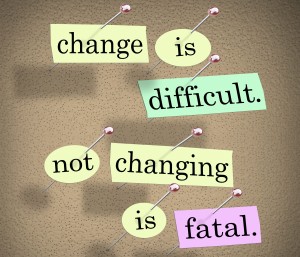#Leadership : It’s Not Enough to Make Good Decisions, You Need to Make Efficient Ones as Well…In Order to Streamline our Process, We Came Up with Several Different Levels of Involvement & Worked to Minimize Everyone’s Time Commitments Within our #KeyDecisions . We Came Up with Five Levels.
One of the key lessons I’ve learned over the years as a founder, CEO, and business adviser is that it’s not enough to make good decisions; you need to make good decisions efficiently. Bad decisions are never good, but it’s just as bad to make good decisions late.
The fact is that business is full of decisions. Effective executives and effective leadership teams learn how to make tens, if not hundreds, of decisions every week to keep the business running well and growing. They do this by applying the right amount of energy, brain power, and focus required for each decision and not an ounce more.
As a CEO, one of the key moves I made for company growth was to establish a leadership team within my company. This was the team I worked with to think through the bigger issues and the team that became responsible for key departments. I realized I couldn’t do everything myself. I needed more input and insights into where to steer the business.
However when I first established this team, I made a critical mistake. I assumed that everyone should be involved in all of decisions. I made a long list with copious notes and called our first meeting with all of the senior team members. The first few decisions felt good because everyone was included. We had good discussion, and we found directions that everyone stood behind.
Like this Article ? Share It ! You now can easily enjoy/follow/share Today our Award Winning Articles/Blogs with Now Over 2.5 Million Growing Participates Worldwide in our various Social Media formats below:
FSC LinkedIn Network: www.linkedin.com/in/fscnetwork
Facebook: http://www.facebook.com/pages/First-Sun-Consulting-LLC-Outplacement-Services/213542315355343?sk=wall
Google+: https://plus.google.com/115673713231115398101/posts?hl=en
Twitter: Follow us @ firstsunllc
Question: Want the ‘the best/current articles/blogs on the web’ on Job Search, Resume, Advancing/Changing your Career, or simply Managing People?
Answer: Simply go to our FSC Career Blog below & type(#career, #leadership, #life) in Blog Search: https://www.firstsun.com/fsc-career-blog/
What Skill Sets do You have to be ‘Sharpened’ ?
Continue of article:
The problem was that we only had completed three or four items over the course of two hours and we had over fifty items on the list. Clearly, this wasn’t going to work going forward. I realized that I needed to find a way to make both good decisions, and also make them in the limited time we had available.
In order to speed things up, we decided that not everyone needed to be involved at the same level for every decisions. For some decisions, certain people needed to be at the table to discussion, but for other decisions we just needed to collect information from a few people.
In order to streamline our process, we came up with several different levels of involvement and worked to minimize everyone’s time commitments within our key decisions. We came up with five levels.
Input
For many decisions, we needed to collect information from several sources for input into the process. We learned that while gathering the information was critical, the key executives who provided the information didn’t need to be part of the process. Once we had the information, they could go back to other work. This worked well for staffing and planning.
Collaborate
At times, we realized that we needed certain people at the table to discuss options and think through scenarios and possible outcomes. It was more than input, so we made it a higher level of involvement. We used this for deciding project team leads and new clients.
Make
One of the best things we did was get super clear on who was actually going to make a decision. Generally we got it down to one person. They took in all of the data, considered all of the options, and applied all of the criteria discussed to make the final choice. Our rule here was to have the person who was closest to the issue make the decision when possible. What we found eventually is that the person closest to the issue and the person who was going to have to live with the decisions were the best people to put in this role.
Approve
As CEO, I realized that I needed to delegate a lot of decisions if I was going to free myself up to focus on more strategic tasks and to empower the team. However, there were some things I still wanted to give a final blessing to before they were implemented. The rule was that I couldn’t change the decision, I could only approve or vote it. It freed up my time immensely and developed my team’s leadership skills.
Inform
This was a powerful move for the team. We realized that many people were coming to the table just so they could hear the discussion and learn what the final resolution was. Rather than having them sit through the meetings, we promised to take notes, record final decisions, and distribute them to the right people in a timely manner. This greatly reduced the people who needed to be at the meeting.
Once we had these levels defined and agreed to, we found the best strategy was to push people from the middle to the edges, to either to input or inform, if we could. We generally tried to only have one person make the decision and then I would often take approve simply to coordinate with strategy and longer term planning.
Now as a business coach, decision making is one of the main things I help leadership teams get right. The key is to balance quality with efficiency and to know when you’ve hit the “good enough” point so you can move forward onto the next decisions quickly and confidently.
Post Written by Bruce Eckfeldt : Bruce Eckfeldt is a five-time Inc 5000 CEO, Certified Gazelle’s Business Growth Coach, and President-Elect of the NYC chapter of EO
FastCompany.com | June 6, 2018


